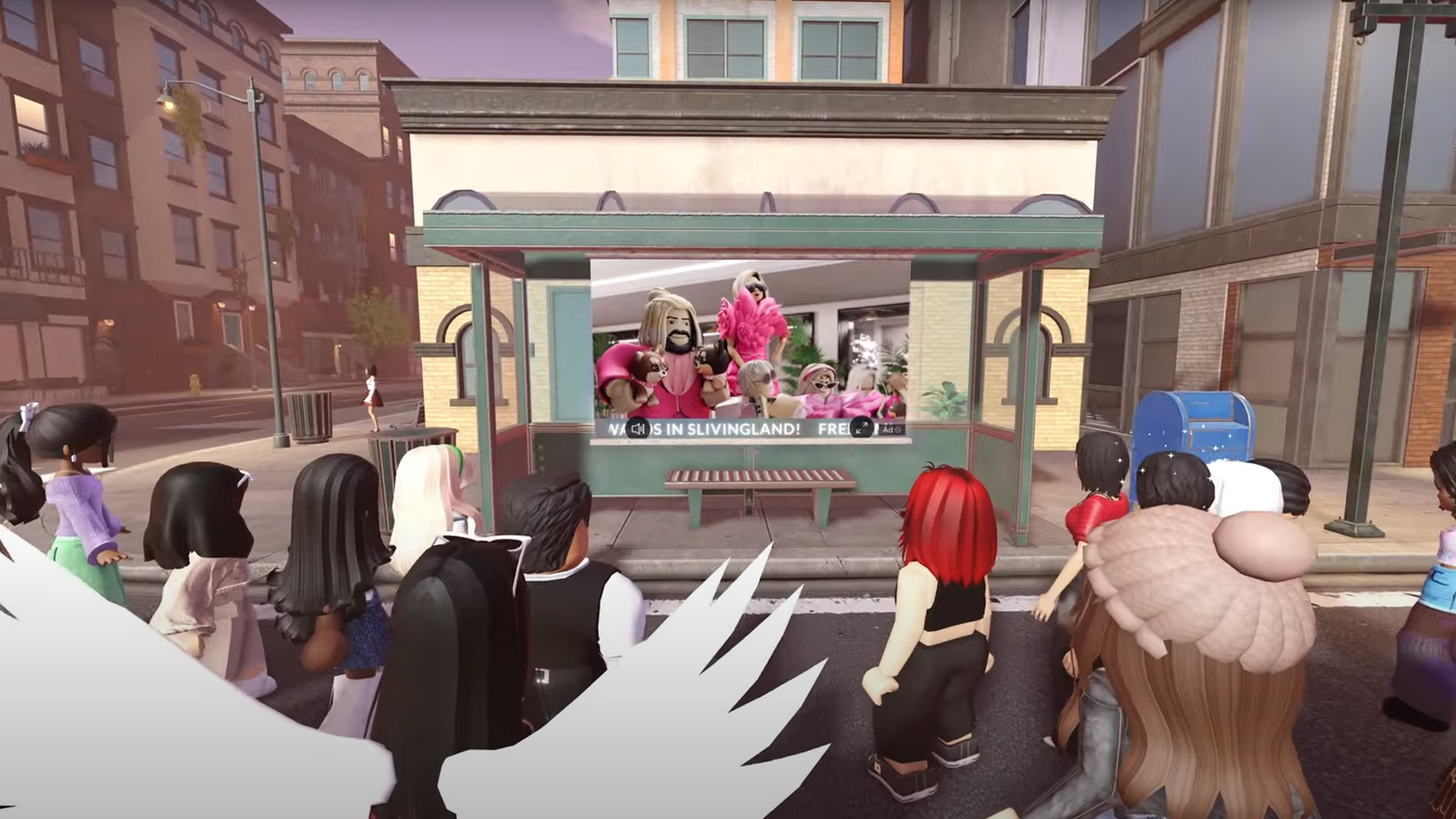“Our new video ads format offers the simplicity and scalability that brands want to drive global awareness and consideration. Any brand can easily leverage our video ads in their campaigns, benefiting from a format built for this digitally savvy consumer generation that’s increasingly hard to reach through traditional and 2D media.”
Stephanie Latham, vice president of global brand partnerships at Roblox
Despite the fading hype around the metaverse, key players shaping the future of digital experiences continue to thrive. Amongst these, Roblox reported a 31% year-over-year revenue increase in Q2 2024, alongside a 21% rise in daily active users and a 24% boost in engagement hours. These results reinforce Roblox's position as a critical emerging platform for brands aiming to connect with young consumers.
First Dip With Video Ads
For brands looking to establish a presence on Roblox, the most common approaches have been creating custom experiences, user-generated content (UGC) items, or integrating into existing games. However, in November 2023, Roblox announced the introduction of Video Ads, expanding the platform’s advertising options beyond the previously available immersive formats like Image Ads (non-clickable static images within an experience) and Portal Ads (static images that teleport users to another experience). This new ad format comes with enhanced controls and features, including genre targeting, brand suitability, and an audience estimator, offering brands more precise and impactful ways to reach their target audience.
Since many brands already allocate budgets for video advertising, which excludes building immersive and gaming environments, Roblox’s introduction of Video Ads was a strategic move to attract more brands to its Gen Z-dominated platform. This shift not only enables brands to seamlessly extend their video ad campaigns into the Roblox ecosystem but also allows its creator community to generate additional revenue from billboards within their experiences and positions Roblox to better compete in the crowded ad market, challenging tech giants like Google and Meta Platforms.
To achieve this, Roblox had to integrate Video Ads with careful consideration, striking a balance between the needs of users, brands, and developers. Given that Gen Z is notably skeptical of traditional advertising, these ads had to be non-intrusive and avoid disrupting gameplay while still delivering measurable results to stakeholders. Consequently, Video Ads on Roblox are designed with user experience in mind: they are either click-to-play or autoplay when a user focuses on the ad, pausing when the user looks away. They are muted by default, with sound only activated if the user unmutes or views the video in full screen. Additionally, if a user unmutes a video and then walks away from the screen, the volume adjusts based on the user’s proximity, ensuring a seamless and user-friendly ad experience.
After six months in closed beta testing with brands like E.l.f. Beauty, Warner Bros Discovery, Walmart, HUGO, and Dentsu—during which some users over 13 began seeing video content on Image Ad billboards—Roblox officially rolled out Video Ads in 2024. This launch marked a significant win for brands, as video ads have a greater potential to capture audience attention compared to static images. Additionally, Roblox introduced innovative features, such as the ability for developers to incentivize users to watch the full 15-second video by offering in-experience rewards like currency or items. This reward mechanism not only enhances user engagement but also provides brands with a more effective way to connect with their target audience.
Roblox’s efforts appear to be paying off, as three-quarters of users reported being more likely to notice brands advertised on the platform compared to those advertised elsewhere, according to an audience impact and brand lift study conducted with Latitude. While it has become easier for brands to enter Roblox’s ecosystem and engage an audience that seems receptive to advertising, challenges remain—particularly the difficulty in attributing sales to impressions from these video ads, as they are non-clickable and lack direct links to a webpage or other calls to action. However, this limitation is expected to be addressed once Roblox rolls out real-world commerce, which began testing in the second half of 2024.









